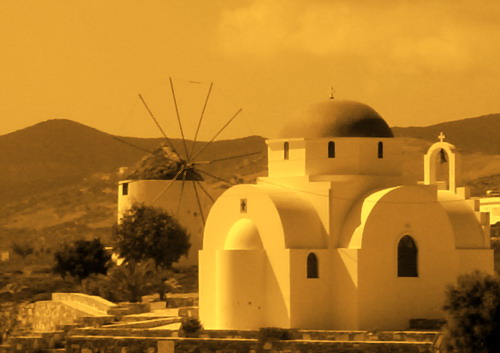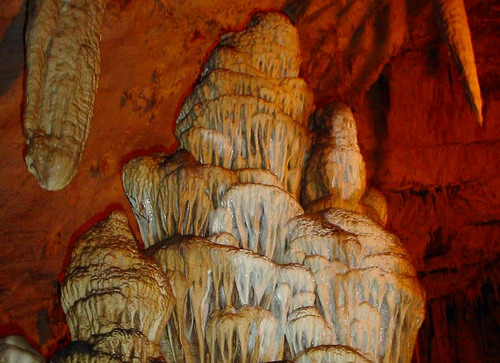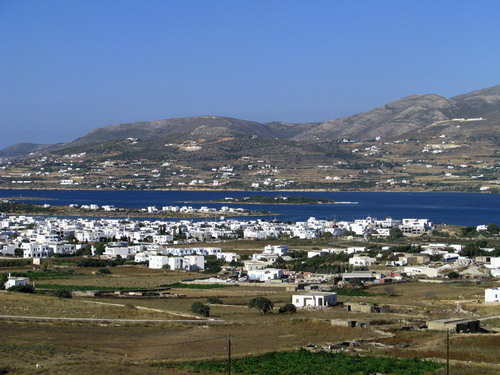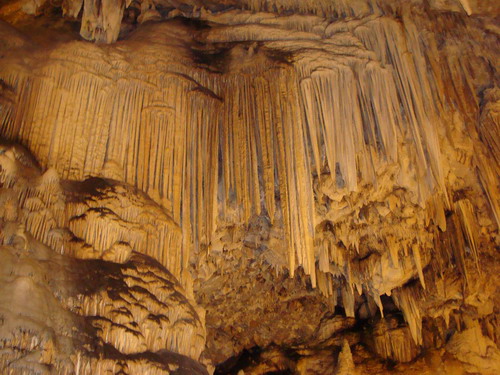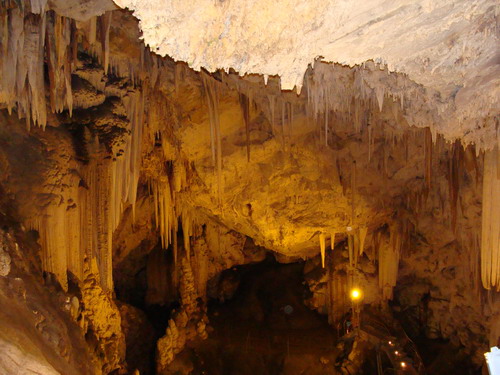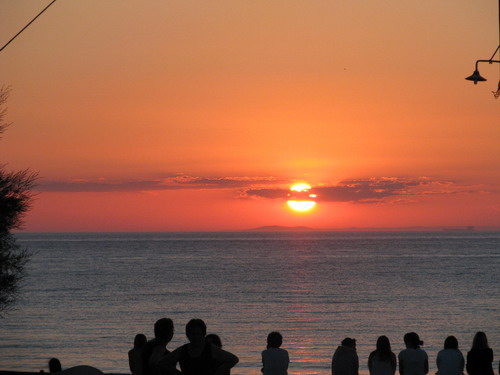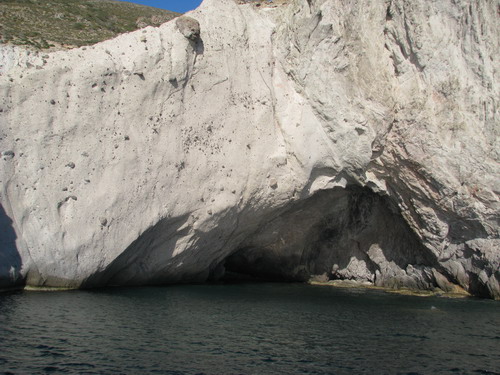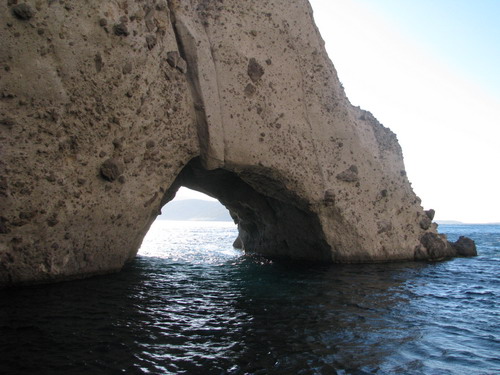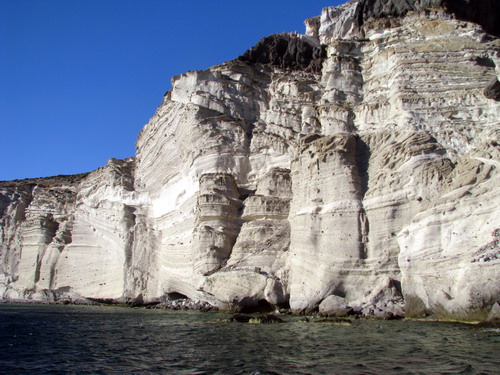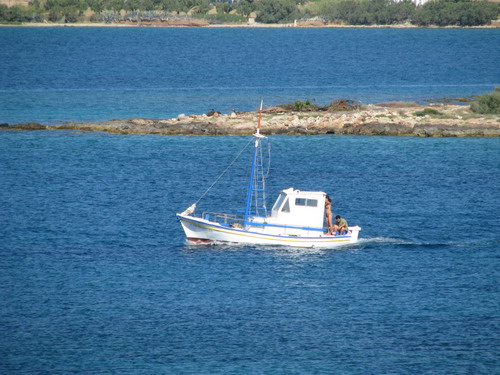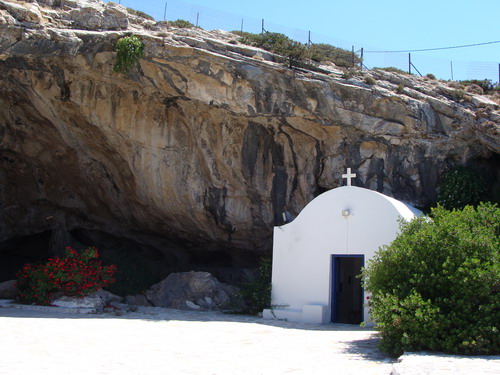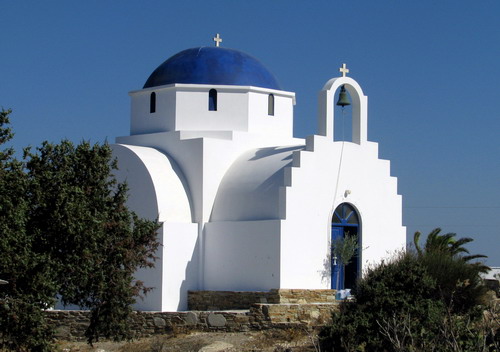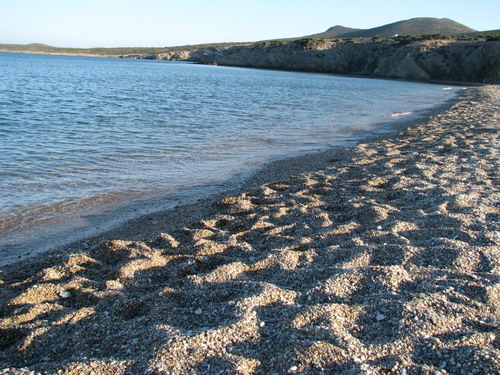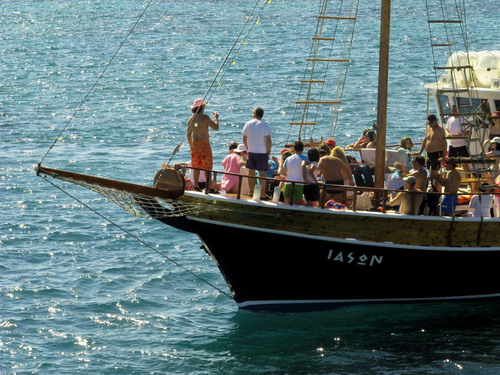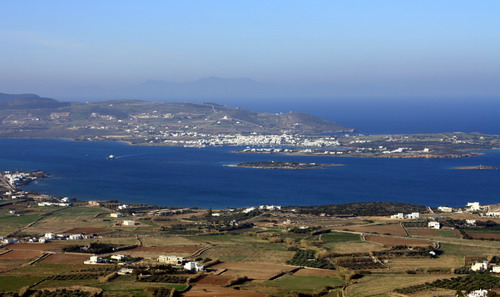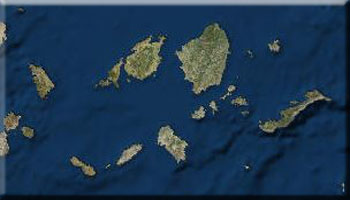The Cave
The Antiparos Cave is unique, not just for its stalactite formations but for its close links to the island's history.
Ancient vessels found inside were dedicated to the goddess Artemis and, according to one epigraph, the lyric poet Archilochus of Paros was among its earliest visitors. The names of Macedonian generals conspiring against Alexander the Great were found inscribed in the cave, where they hid to escape Alexander. Another notable visitor was the Marquis de Nointel, the French ambassador to Constantinople, who spent Christmas Day 1673 in the cave. Many visitors, from the Marquis de Chambert in 1775 to King Othon (Otto), Greece's first king, in 1840 carved their name on the walls. During the second world war, the cave suffered extensive damage by the Nazi occupiers.
The cave can be reached by car or municipal bus. The church of Ai Yannis Spiliotis stands at its entrance.
Despotiko
The god Apollo was widely worshipped in the Cyclades, and the largest cult center dedicated to the god was on the island of Delos. There were also 22 smaller temples, and one of these was at Despotiko. The sanctuary is unique in the Aegean. Built on one of the tiniest uninhabited and unspoiled islets of the Aegean, Despotiko stands intact. The temple was used for worship from the seventh century B.C. through Roman times.The site of Despotiko has been identified as ancient Perpesinthos.
Excavations in the 19th century by the Greek archaeologist Christos Tsountas uncovered Proto - Cycladic cemeteries. In 1959, excavations under N. Zafiropoulos at Zoumbaria and Mandra on the island's northeastern coast found traces of a Doric temple. Since 1997, excavations under Yannos Kourayos have brought to light extensive remains of a temple's auxiliary areas. A unique find was a large idol of a female deity that has been dated to 680 - 660 B.C. Similarities in mobile finds and architectural parts at Despotiko and those found at the Delios sanctuary of Apollo and Artemis on Paros suggest the site was a temple dedicated to the cult worship of these two deities.
Kastro
Traces of a Venetian castle are visible among the traditional architecture of the main settlement on Antiparos. Built in 1440 to shelter inhabitants during frequent pirate raids, the Kastro, or fortified settlement was a square structure whose perimeter was formed by the outer walls of dwellings, with an interior courtyard and a circular tower in the center. The tower served as the residence of the local archon. Kastro's single entrance is next to the Ayios Nikolaos cathedral.
The Folklore Museum of Antiparos
In the old castle of Antiparos will find the Folklore Collection of Community Business Antiparos in which there are old objects, specimens from Cycladic figurines, traditional uniforms of Antiparos and photographs from the excavation of Despotiko.









